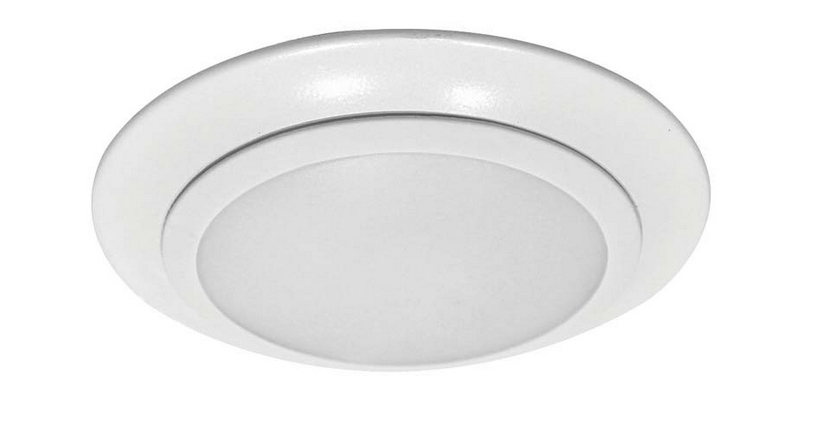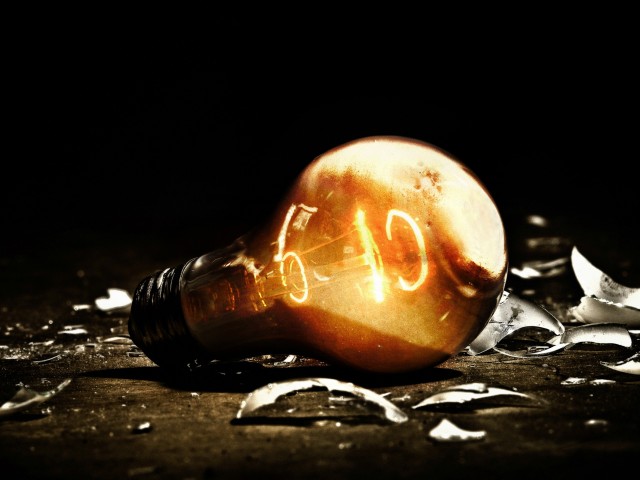By Clarissa Allison | June 3rd, 2016
The lighting industry grows and changes, and many common misconceptions have arisen. New technology sees the movement towards energy conscious lighting alternatives. There are even some myths regarding our old standby, the incandescent bulb, that may surprise you! Read on for some enlightening facts on illumination:
Myth: LED’s can cause optical light damage and interfere with the human circadian rhythm, causing abnormal sleep cycles .
FACT 1: The spectral emission of LEDs has become frequent subject of many concerns, but we’re here to put your retinas at ease. Too much exposure to “blue light”—or radiant energy with wavelengths between about 400 and 480 nm—is known to cause retinal damage. This doesn’t mean LEDs are more likely than other sources to cause harm to eyes, circadian rhythm, or materials. Risks are about the same for typical commercially available LEDs as for other source types because they all generally contain equivalent amounts of blue light. Read the lengthily-titled technical brief explaining the findings by the U.S. Department of Energy here: True Colors: LEDs and the Relationship Between CCT, CRI, Optical Safety, Material Degradation, and Photobiological Stimulation.
Myth: Lighting retro-fitting and other renovations aren’t cost-effective.
FACT 2: Companies and consumers alike often view lighting-upgrade projects as a revenue drain. In fact they represent savings that can be seen year in and year out. The solution begins with knowing how and when the financial payback presents itself. When you’re saving energy, you’re saving money paid to the utility company.This in turn frees up more money to use on upgrades, which in turn will reduce utility and energy costs even further.
But debunking these misconceptions requires realistic planning and specifications by managers and lighting professionals. It is important that your lighting-management provider extends the time and effort to perform a full-scale energy audit. This should include before-and-after readings on the lighting circuits and the lighting levels. Have all warranties in writing and ensure the lighting-management company has the resources to enforce the policies. This will avoid the frustration involved in being faced with savings and performance that do not meet original expectations.
Myth: All LED recessed down-lights have to be “fire-rated”
FACT 3: The law surrounding recessed LED down-lights is rife with misconceptions. There are a few key points to remember when installing these lights. All downlights must be fire rated when installed in a ceiling with living accommodation above. The minimum fire rating is 30 minutes but 60 is preferred. Downlights do not need to be fire rated in commercial settings with no living accommodation above.
In addition, some think that the term ‘fire rating’ means that it’s more likely the downlight itself could cause a fire from overheating. Breathe easy, because not only is this definition untrue, this is also very unlikely with LED. They operate at far lower temperatures than conventional lighting products. A ‘fire rating’ refers to the time in minutes that a unit can be reasonably expected to HOLD BACK a fire. Fire rated downlights are necessary because standard recessed downlights would simply drop out of the ceiling leaving holes exposed. This invites flames to spread to an upper level. In many cases on retail or commercial LED lighting applications, a fire rated product is not necessary. This is because they are usually on a top storey, in a display unit or there is no residential accommodation above.
Myth: Just about everything surrounding the incandescent light bulb ban.
FACT 4: Incandescent bulbs aren’t illegal, so there’s no need for Aunt Ida to bake a file into your birthday cake. The ban only applies to the manufacture and import of incandescent bulbs, not their use by consumers. And some specialty incandescent bulbs — appliance bulbs, marine lamps, three-way bulbs — are exempt from the ban and will continue to be available to buy.
Many people also believe that energy saving bulbs will cost too much money. According to the EPA about 12% of our power bill payment goes to lighting, according to the EPA. A CFL bulb uses about 75 percent less energy than an incandescent but lasts 10 times longer! We can all save more than $40 over the lamp’s lifetime.
Myth: I’m excited to finally throw out my old fluorescent lighting! I can just toss it into the dumpster, right? And what if I break a fluorescent bulb?
FACT 5: Because florescent bulbs contain mercury, they may pose an environmental hazard when disposed of improperly. The best way to dispose of inefficient lighting is through recycling. If there are no recycling centers or drop-off locations in your local area, you can purchase pre-labeled recycling kits. These allow you to mail used bulbs to recycling centers to help ensure proper disposal.
If you break a fluorescent bulb, have people and pets leave the room, shut off central air or heating and air the room out. Find appropriate cleaning supplies which include sticky tape, stiff paper, damp paper towels. Locate an an airtight container to put the broken pieces in. Learn more vital information on how to establish a recycling program and properly dispose of these bulbs on the U.S. Environmental Protection Agency website.
More questions regarding new energy saving lighting options? Don’t hesitate to call us toll free at 1877 385 2104 or email info@louielighting.com. The Louie Lighting team wishes you and yours a wonderful weekend.





Great article. I never knew that disposing of fluorescent lights the wrong way was actually hazardous.